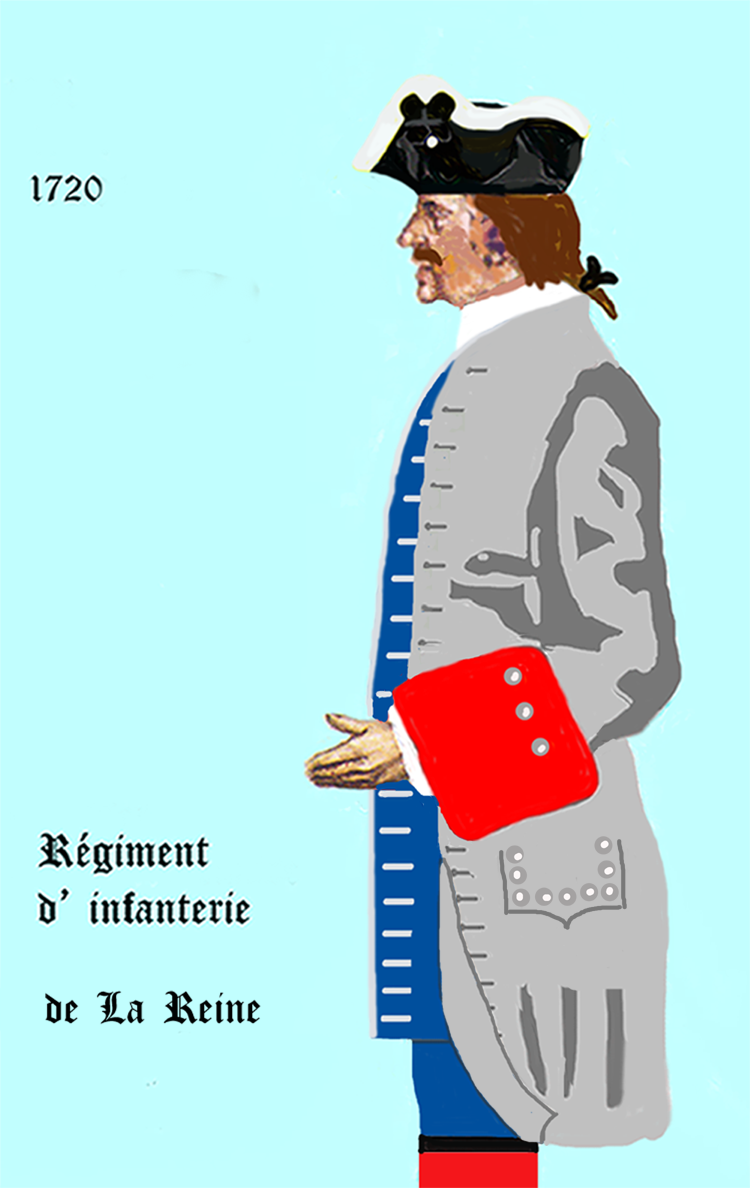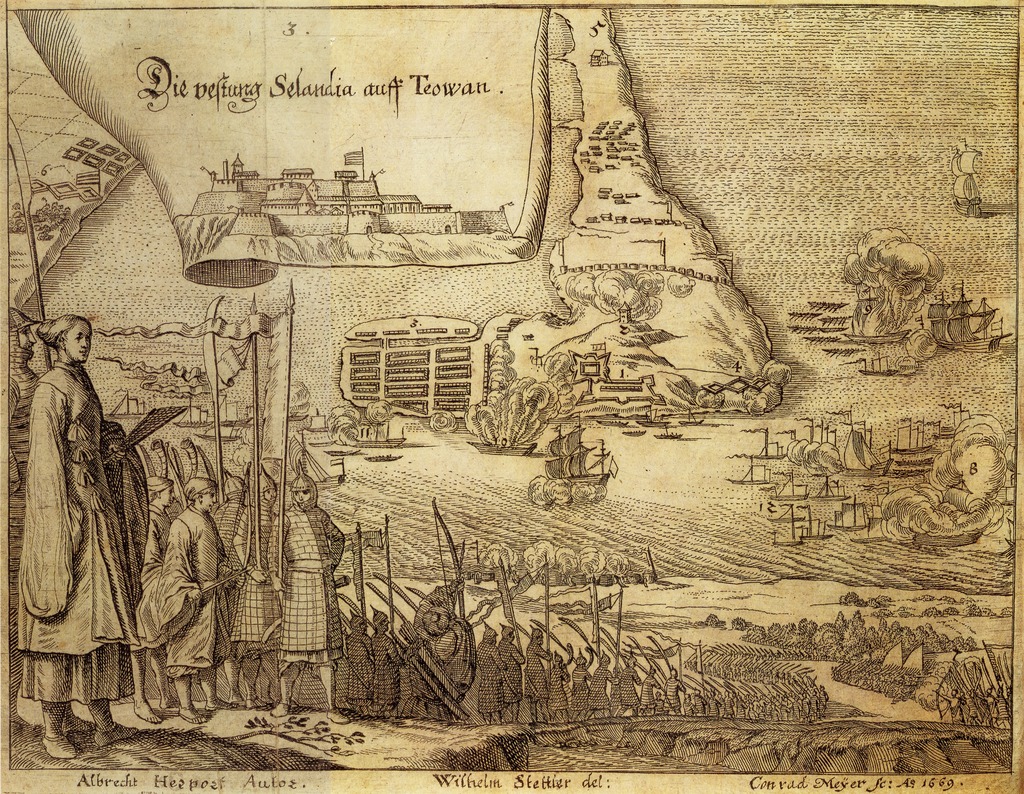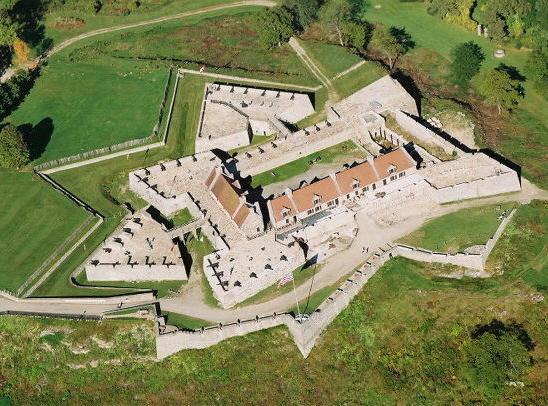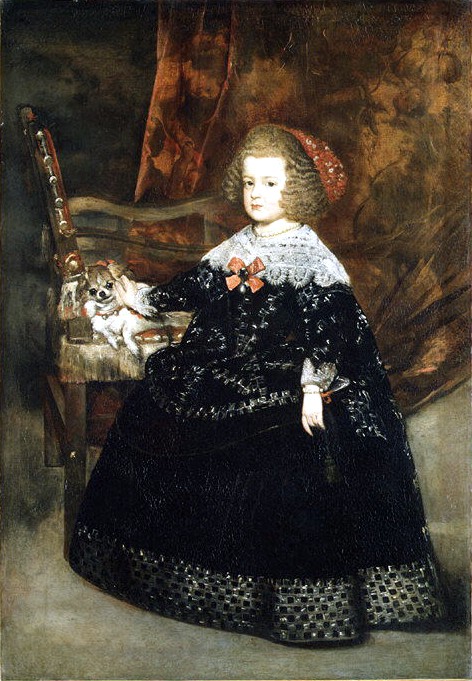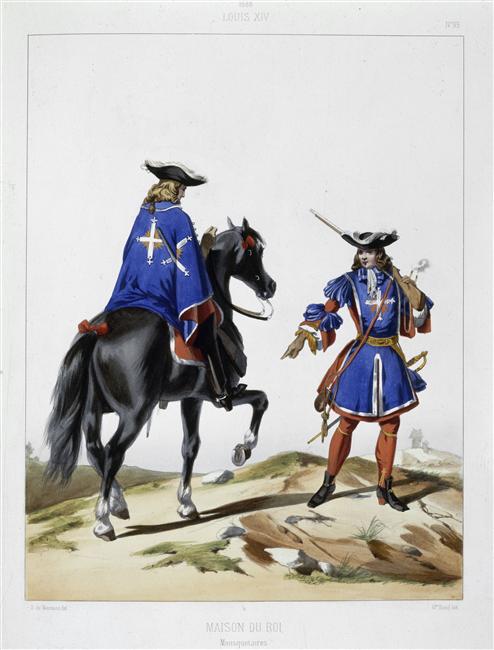|
Régiment De La Reine
The Régiment de la Reine (, ''Queen's Regiment'') was a French Army infantry regiment active in the 17th and 18th centuries. It is principally known for its role in the Seven Years' War, when it served in the French and Indian War, North American theatre. Early history The Régiment de la Reine traced its origin to the Mazarin Français Regiment, which in 1661 was named Régiment de la reine mère (''Regiment of the Queen Mother'') by Louis XIV as part of a general reorganisation of the French Army. Following the death of Louis' mother Anne of Austria in 1666, the regiment was renamed as the Régiment de la Reine. Seven Years War During the Seven Years' War, a battalion of the regiment took part in several battles including Fort Saint Frédéric on Lake George (September 1755), and the taking of Battle of Fort Bull, Fort Bull and Siege of Fort William Henry, Fort William-Henry. Their greatest victory came at Battle of Carillon, Fort Carillon in 1758 against the forces of Gene ... [...More Info...] [...Related Items...] OR: [Wikipedia] [Google] [Baidu] |
Tambour Militaire
The snare drum (or side drum) is a percussion instrument that produces a sharp staccato sound when the head is struck with a drum stick, due to the use of a series of stiff wires held under tension against the lower skin. Snare drums are often used in orchestras, concert bands, marching bands, parades, drumlines, drum corps, and more. It is one of the central pieces in a drum set, a collection of percussion instruments designed to be played by a seated drummer and used in many genres of music. Because basic rhythms are very easy to learn to play on a snare drum even for children, the instrument is also suitable for the music education for young children and a rhythm band. Snare drums are usually played with drum sticks, but other beaters such as the brush or the rute can be used to achieve different tones. The snare drum is a versatile and expressive percussion instrument due to its sensitivity and responsiveness. The sensitivity of the snare drum allows it to respond ... [...More Info...] [...Related Items...] OR: [Wikipedia] [Google] [Baidu] |
Military Units And Formations Disestablished In 1791
A military, also known collectively as armed forces, is a heavily armed, highly organized force primarily intended for warfare. Militaries are typically authorized and maintained by a sovereign state, with their members identifiable by a distinct military uniform. They may consist of one or more military branches such as an army, navy, air force, space force, marines, or coast guard. The main task of a military is usually defined as defence of their state and its interests against external armed threats. In broad usage, the terms "armed forces" and "military" are often synonymous, although in technical usage a distinction is sometimes made in which a country's armed forces may include other paramilitary forces such as armed police. Beyond warfare, the military may be employed in additional sanctioned and non-sanctioned functions within the state, including internal security threats, crowd control, promotion of political agendas, emergency services and reconstruction, ... [...More Info...] [...Related Items...] OR: [Wikipedia] [Google] [Baidu] |
1791 Disestablishments In France
Events January–March * January 1 – Austrian composer Joseph Haydn arrives in England, to perform a series of concerts. * January 2 – Northwest Indian War: Big Bottom Massacre – The war begins in the Ohio Country, with this massacre. * January 12 – Holy Roman Empire, Holy Roman troops reenter Liège, heralding the end of the Liège Revolution, and the restoration of its Prince-Bishopric of Liège, Prince-Bishops. * January 25 – The Parliament of the United Kingdom, British Parliament passes the Constitutional Act 1791, splitting the old Province of Quebec (1763–91), province of Quebec into Upper Canada, Upper and Lower Canada. * February 8 – The First Bank of the United States, Bank of the United States, based in Philadelphia, is incorporated by the federal government with a 20-year charter and started with $10,000,000 capital.''Harper's Encyclopaedia of United States History from 458 A. D. to 1909'', ed. by Benson John Lossing ... [...More Info...] [...Related Items...] OR: [Wikipedia] [Google] [Baidu] |
1661 Establishments In France
Events January–March * January 6 – The Fifth Monarchists, led by Thomas Venner, unsuccessfully attempt to seize control of London; George Monck's regiment defeats them. * January 29 – The Rokeby baronets, a British nobility title is created. * January 30 – The body of Oliver Cromwell is exhumed and subjected to a posthumous execution in London, along with those of John Bradshaw and Henry Ireton. * February 5 – The Shunzhi Emperor of the Chinese Qing Dynasty dies, and is succeeded by his 7-year-old son the Kangxi Emperor. * February 7 – Shah Shuja, who was deprived of his claim to the throne of the Mughal Empire by his younger brother Aurangzeb, then fled to Burma, is killed by Indian troops in an attack on his residence at Arakan. * February 14 – George Monck’s regiment becomes ''The Lord General's Regiment of Foot Guards'' in England (which later becomes the Coldstream Guards). * March 9 – Following the death o ... [...More Info...] [...Related Items...] OR: [Wikipedia] [Google] [Baidu] |
Military Of New France
The military of New France consisted of a mix of regular forces from the French Royal Army (Carignan-Salières Regiment) and French Navy ( Troupes de la marine, later Compagnies Franches de la Marine) supported by small local volunteer militia units ( Colonial militia). Most early troops were sent from France, but localization after the growth of the colony meant that, by the 1690s, many were volunteers from the settlers of New France, and by the 1750s most troops were descendants of the original French inhabitants. Additionally, many of the early troops and officers who were born in France remained in the colony after their service ended, contributing to generational service and a military elite. The French built a series of forts from Newfoundland to Louisiana during the 1600s to the late 1700s. Some were a mix of military posts and trading forts. Military strategy The soldiers of New France were either exceptionally well trained and very apt to the challenges of the colon ... [...More Info...] [...Related Items...] OR: [Wikipedia] [Google] [Baidu] |
Fort Carillon
Fort Carillon, presently known as Fort Ticonderoga, was constructed by Pierre de Rigaud de Vaudreuil, Governor of New France, to protect Lake Champlain from a British invasion. Situated on the lake some south of Fort Saint-Frédéric, it was built to prevent an attack on Canada and slow the advance of the enemy long enough for reinforcements to arrive. Assigned to remedy Fort Saint Frédéric's inability to resist a constant British threat to the south, French King's Engineer Michel Chartier de Lotbinière began construction of Fort Carillon where Lake George, at that time called Lac Saint Sacrement, joins Lake Champlain by the La Chute river. Construction began in October 1755.Boréal Express, Canada-Québec, Éditions du Renouveau Pédagogique Inc. 1977 Location Fort Carillon was situated south of Lake Champlain and north of Lake George, a natural point of conflict between the French forces, which were advancing south from Quebec City through the Richelieu River towa ... [...More Info...] [...Related Items...] OR: [Wikipedia] [Google] [Baidu] |
Maria Theresa Of Spain
Maria Theresa of Spain (; ; 10 September 1638 – 30 July 1683) was Queen consort of France, Queen of France from 1660 to 1683 as the wife of King Louis XIV. She was born an Infante, Infanta of Spain and Portugal as the daughter of King Philip IV of Spain, Philip IV and Elisabeth of France (1602–1644), Elisabeth of France, and was also an Archduke#Usage, Archduchess of Austria as a member of the Spanish branch of the House of Habsburg. Her marriage in 1660 to King Louis XIV, her double first cousin, was arranged with the purpose of ending the lengthy Franco-Spanish War (1635–1659), war between France and Spain. Famed for her virtue and piety, she saw five of her six children die in early childhood, and is frequently viewed as an object of pity in historical accounts of her husband's reign, since she was often neglected by the court and overshadowed by the King's many mistresses. Without any political influence in the French court or government (except briefly in 1672, when sh ... [...More Info...] [...Related Items...] OR: [Wikipedia] [Google] [Baidu] |
Sky-blue
Sky blue refers to a collection of shades comparable to that of a clear daytime sky. Typically it is a shade of cyan or light teal, though some iterations are closer to light azure or light blue. The term (as "sky blew") is attested from 1681. A 1585 translation of Nicolas de Nicolay's 1576 ' includes "the tulbant urbanof the merchant must be ''skie coloured''". Displayed at right is the web colour ''sky blue''. Variations Celeste Celeste (, , ) is the colloquial name for the pale turquoise blue colour. The same word, meaning "of the sky", is used in Spanish, Portuguese and Italian for the colour. Etymologically, it is derived by Latin term , that means in Italian. There are two "conventional" colours denominated celeste, according to the color models. One is the ''pure Celeste'', ( HEX#B2FFFF; RGB 178,255,255)'''' which may be referred as the "true" celeste as it is traditionally or officially understood; in English, it may also be referred to as Italian sky blue ( ... [...More Info...] [...Related Items...] OR: [Wikipedia] [Google] [Baidu] |
Tricorne
The tricorne or tricorn is a style of hat in a triangular shape, which became popular in Europe during the 18th century, falling out of style by the early 1800s. The word "tricorne" was not widely used until the mid-19th century. During the 18th century, hats of this general style were referred to as "cocked hats". At the peak of its popularity, the tricorne varied greatly in style and size, and was worn not only by the aristocracy, but also as common civilian dress, and as part of military and naval uniforms. Typically made from animal fiber, the more expensive being of beaver-hair felt and the less expensive of wool felt, the hat's most distinguishing characteristic was that three sides of the brim were turned up (cocked) and either pinned, laced, or buttoned in place to form a triangle around the crown. The style served two purposes: first, it allowed stylish gentlemen to show off the most current fashions of their wigs, and thus their social status; and secondly, the cocked ... [...More Info...] [...Related Items...] OR: [Wikipedia] [Google] [Baidu] |
Grenadiers
A grenadier ( , ; derived from the word ''grenade'') was historically an assault-specialist soldier who threw hand grenades in siege operation battles. The distinct combat function of the grenadier was established in the mid-17th century, when grenadiers were recruited from among the strongest and largest soldiers. By the 18th century, the grenadier dedicated to throwing hand grenades had become a less necessary specialist, yet in battle, the grenadiers were the physically robust soldiers who led vanguard assaults, such as storming fortifications in the course of siege warfare. Certain countries such as France ( Grenadiers à Cheval de la Garde Impériale) and Argentina ( Regiment of Mounted Grenadiers) established units of Horse Grenadiers, and for a time the British Army had Horse Grenadier Guards. Like their infantry grenadier counterparts, these horse-mounted soldiers were chosen for their size and strength (heavy cavalry). In modern warfare, a grenadier is a specially tr ... [...More Info...] [...Related Items...] OR: [Wikipedia] [Google] [Baidu] |
